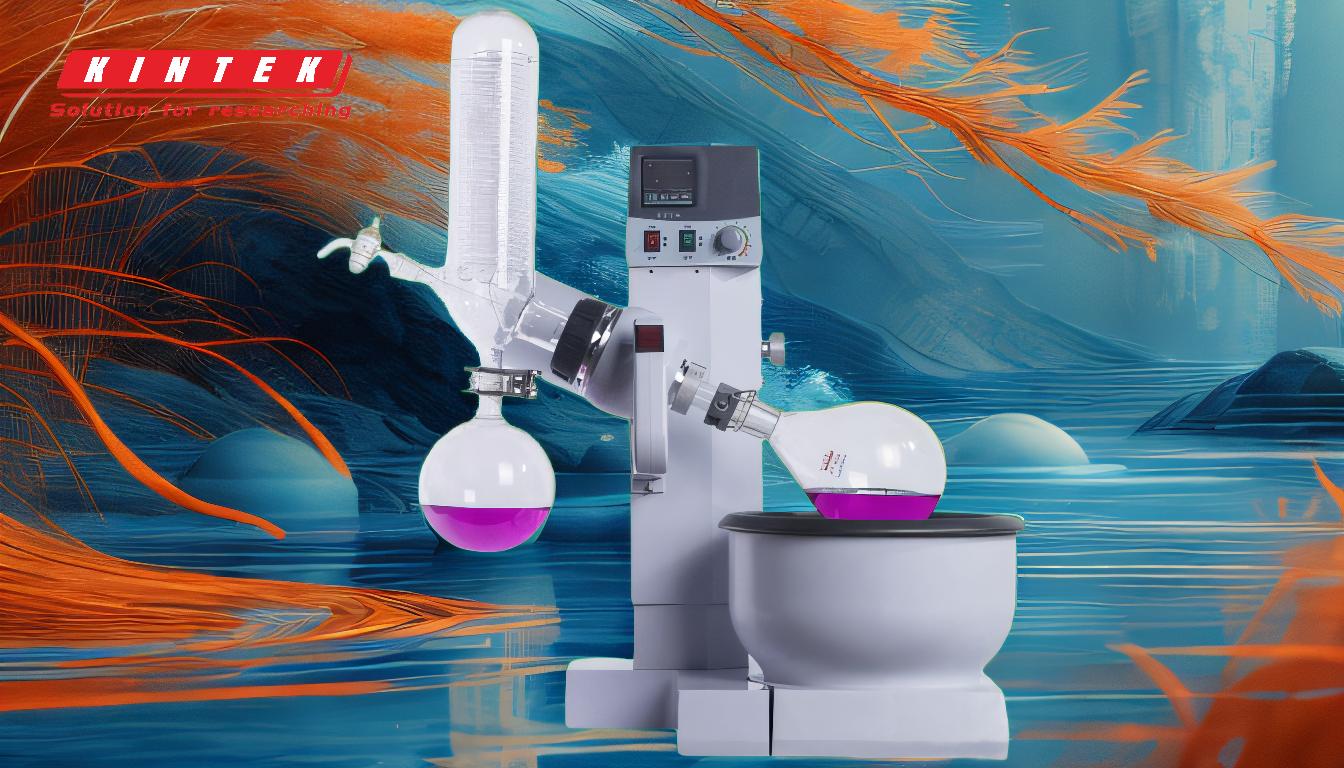Using a vacuum in a rotary evaporator is essential for achieving efficient and controlled evaporation of solvents or low-boiling compounds. The primary purpose of the vacuum is to lower the boiling point of the solvent, enabling evaporation at reduced temperatures. This not only protects temperature-sensitive compounds from degradation but also ensures a faster, safer, and more precise distillation process. The vacuum system reduces pressure within the evaporator, facilitating solvent separation, minimizing the risk of bumping, and preventing the release of volatile vapors into the environment. Overall, the vacuum enhances the performance and safety of the rotary evaporation process.
Key Points Explained:

-
Lowering the Boiling Point of Solvents:
- The vacuum reduces the pressure inside the rotary evaporator, which directly lowers the boiling point of the solvent. This allows solvents to evaporate at much lower temperatures than they would under normal atmospheric pressure.
- For example, water boils at 100°C at standard pressure but can boil at much lower temperatures (e.g., 40°C) under reduced pressure.
- This is particularly beneficial for heat-sensitive compounds that could degrade or lose their integrity at higher temperatures.
-
Protecting Temperature-Sensitive Compounds:
- By enabling evaporation at lower temperatures, the vacuum helps preserve the chemical structure, flavor, or biological activity of sensitive samples.
- This is crucial in applications such as pharmaceutical research, food processing, or the extraction of natural products, where maintaining the integrity of the sample is paramount.
-
Improving Efficiency and Speed:
- Lowering the boiling point accelerates the evaporation process, making it faster and more efficient.
- This is especially useful when working with large volumes of solvents or when time is a critical factor in the process.
-
Enhancing Solvent-Product Separation:
- The vacuum ensures a more controlled and precise separation of the solvent from the compound of interest.
- This results in a purer final product and reduces the risk of contamination or loss of valuable material.
-
Reducing the Risk of Bumping:
- Bumping occurs when a liquid boils unevenly, causing violent splashing or sudden eruptions. This can lead to sample loss, contamination, or damage to equipment.
- The vacuum system, combined with the rotation of the flask, promotes smooth and even boiling, minimizing the risk of bumping.
-
Ensuring Safety:
- The vacuum prevents volatile vapors from escaping into the air, reducing the risk of exposure to hazardous chemicals or fumes.
- This is particularly important in laboratories where safety and environmental regulations must be strictly followed.
-
Energy Efficiency:
- By lowering the boiling point, the vacuum reduces the need for excessive heat, which saves energy and reduces operational costs.
- This makes the process more sustainable and cost-effective, especially for large-scale operations.
-
Versatility in Applications:
- The ability to adjust the vacuum pressure allows for precise control over the evaporation process, making rotary evaporators suitable for a wide range of applications, from small-scale research to industrial production.
In summary, the use of a vacuum in a rotary evaporator is a critical factor in achieving efficient, safe, and controlled evaporation. It enables lower-temperature operation, protects sensitive samples, improves separation, and enhances overall process performance. These benefits make the vacuum system an indispensable component of rotary evaporation in various scientific and industrial settings.
Summary Table:
| Key Benefit | Description |
|---|---|
| Lower Boiling Points | Reduces solvent boiling points, enabling evaporation at lower temperatures. |
| Protects Sensitive Compounds | Preserves chemical structure, flavor, or biological activity of heat-sensitive samples. |
| Improves Efficiency & Speed | Accelerates evaporation, saving time and energy. |
| Enhances Solvent Separation | Ensures precise separation, yielding purer final products. |
| Reduces Bumping Risk | Promotes smooth boiling, minimizing sample loss and equipment damage. |
| Ensures Safety | Prevents volatile vapor release, reducing exposure to hazardous chemicals. |
| Energy Efficiency | Lowers heat requirements, saving energy and operational costs. |
| Versatility in Applications | Adaptable for small-scale research to industrial production. |
Ready to optimize your evaporation process? Contact us today to learn more about rotary evaporators!











